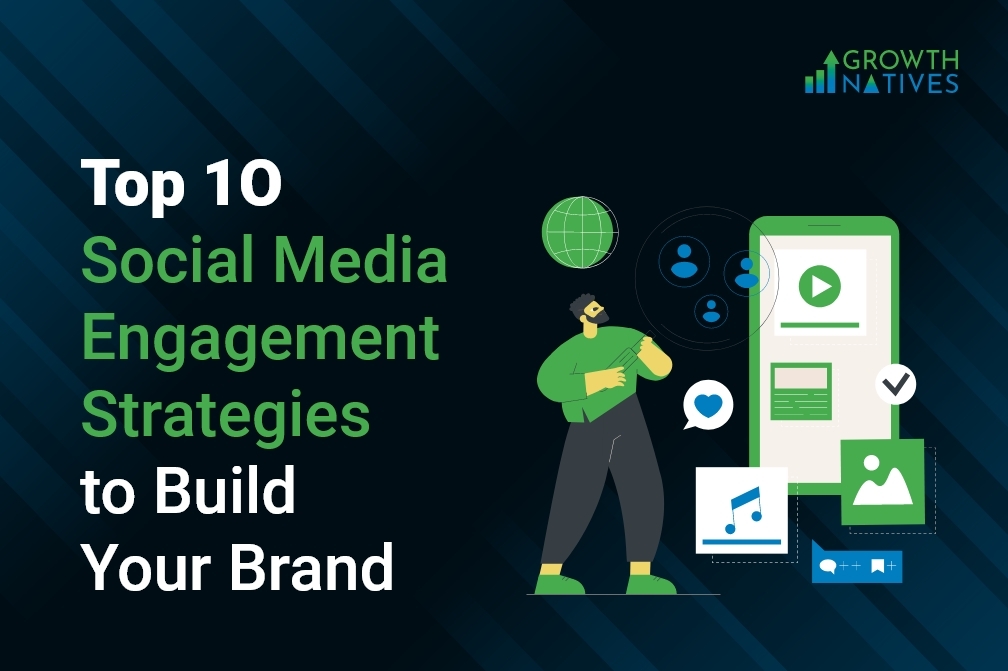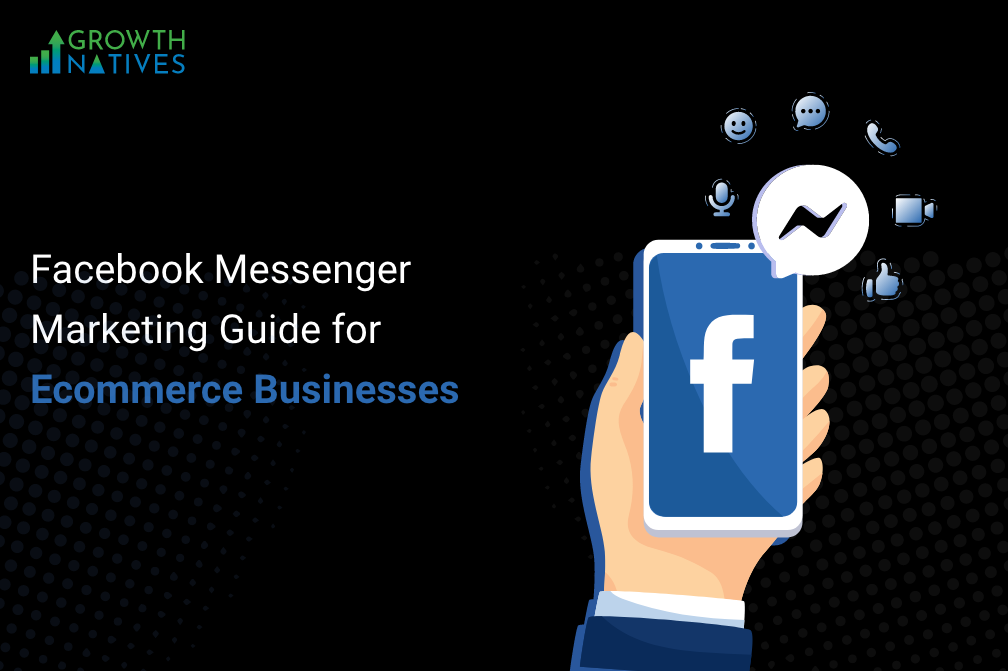Top 10 Social Media Engagement Strategies to Build Your Brand in 2022

- By Sakshi Arora,
Published on: Feb 22, 2021 - Updated on: Mar 30, 2023
Table of Contents
"It's a dialogue, not a monologue, and some people don't understand that. Social media is more like a telephone than a television.
- Amy Jo Martin, Founder and CEO of Digital Royalty
One of the key components that have played a significant role in making certain brands stand out and reach shores (that otherwise would have been far too distant), is ‘engagement’. Interacting with the audience and listening to their queries allow the brands to connect with them on a personal level, which makes it crucial for them to know how to develop Social Media Engagement Strategies to build connections and communities that are more than just consumers of your products or services.
When it comes to social media marketing, one can't do without Social Media Engagement Strategies. If you're thoughtful about the way you communicate and connect with others online, you'll have tremendous success in reaching customers via SME.
But first, you need to understand what it is, how it works, and what role you can play to make it happen.
What are Social Media Engagement Strategies?
It is the process through which online interactions and the content you post online help you build connections with other people within online communities.
What is the purpose of Social Media Engagement Strategies?
Social Media Engagement Strategies incorporates social media tools or social networks to strengthen relationships with others resulting in reaction, interaction, or action.
Building and nurturing a space that is built specifically for the purpose of engagement places you as a leader in your field.
Your audience will start acknowledging that your platforms are the place to go for quality dialogue, as well as for the diversity of opinions.
Best Social Media Engagement Strategies to Build Your Brand in 2022:
1. Creating Meaningful Connections
For Social Media Engagement to be successful, you need to connect with the right kind of people. It means that the individuals who willingly align themselves with your brand, pay attention when you share content online, and are actually interested in what you've shared.
Start by building an online presence that reflects your brand and is focused, interactive, attractive, and valuable to the audience you want to connect with.
Follow the people whom you want to follow you. You can boost your outreach by leveraging the highly targeted advertising options on the most popular social networks to attract the right audience to build your fan base.
Social Media Engagement works best when you respect your connections and value their time and attention. Your social media connections are as strong as the number of efforts you make in obtaining and developing them over time. You can't have lasting or genuine engagements without strong and attentive connections.
2. Mastering the Art of Storytelling
People love stories! An excellent way to start a conversation is by narrating a story. Storytelling is a powerful tool to drive Social Media Engagement. You can do it by using words, pictures, audio, and video. Although, merely posting images, videos, and other visuals aren't enough.
Tell stories that are spellbinding enough for others to want to pass them along. Brands that go beyond creating and sharing content that everybody produces and embrace visual storytelling are emerging as the pack leaders and are rewarded with more engagement, referral traffic, and even sales.
Rather than relying on text-heavy content, a successful storytelling strategy with a visual approach has more potential for Engagement, conversation, and sharing.
3. Authentic Interaction
Keeping it real
Your audience will only engage if they feel invested in who you are as a brand. Are you fun or serious? Showing personality gives an impression of the people behind the brand.
When your audience knows that they can connect with an individual behind your brand, your brand becomes personalized. It's a great idea to give your Social Media Engagement teams names and faces to create personal connections.
Honesty
When someone in your community puts up a question, respond to the best of your ability without being deceitful. If you don't know an answer, promise to find out and return with an honest answer. Your audience will appreciate your effort and are more likely to come back to learn more.
Ownership
You might make some mistakes along the way, so you must accept them and take full responsibility for your actions. Respond openly to your customer's questions, criticisms, and concerns. There's a chance that your greatest critics may become your most outspoken fans when they acknowledge that you hear them and respond honestly with full transparency.
4. Meaningful Contributions to the Conversation
Conversations are happening everywhere online, and most of them take place on social networks. One of the most essential social media engagement strategies is to become part of those conversations in a way that makes sense to your business goals and your audience.
According to Nielsen global study, of the consumers who were interviewed worldwide, 92% say that they trust earned media more than all other forms of advertising.
Follow these tips to enter into meaningful conversations in the right places and with the right approach:
Study the Topics that Matter to Your Audience
Investigate to find out where they spend most of their time and what topics they care about. See if you can reach them on Facebook or Twitter and whether they're willing to read your content or respond to pictures on Pinterest or Instagram.
Social Media Engagement tools such as Followerwonk allows you to get an idea about your followers' interests by creating a word cloud, a visualized series of words composed of the most popular user-generated words or tags.
You can also ask your current customers where they spend most of their time online and what they're comfortable doing there.
Build Your Social Media Presence
After you identify where your audience interacts, go there. Create a Facebook Fan Page, start a Pinterest account, or sign up for Twitter. Hire a writer to create content for your blog and your social networks. Let your audience know that they matter to you. Listen, respond, and start engaging with them.
Continue to Ask Questions
Even after establishing a presence on suitable networks, continue asking them questions. Show your audience that their thoughts and opinions are of high value to you by asking them what they think and listening to what they have to say.
5. Giving Your Audience What They Want
After drawing your audience's attention, the one thing you need to ask is how to keep their attention and compel them to action? The following list explains why people stay connected with you on social networks and why they click the Like button or share your posts:
- The content resonates with them
- The content originates from a source they trust
- The content reflects something about themselves
- The content puts them in-the-know
- Others respond
- You respond
- You give perks
6. Setting Realistic Goals
In order to be present and effective online, start assessing your capacity and studying the competition. It is essential to evaluate your company's capacity sincerely and handle every aspect of Social Media Engagement early on so that you don't set yourself up for failure.
You have to be thoughtful and selective about the tools you use, how you use them, and the way you engage. Consider the following factors:
Time
Determine how much time you can invest daily, weekly, or monthly to engage on social networks.
Resources
Plan out the support system you have in place to do the work. Resources in Social Media Engagement usually refers to
• People who handle the work
• Tools and services you use to carry out the work
Skills
Even if you have the tools and people to engage, without the right skill set or the ability to develop those skills through training, no amount of resources will be able to put you on the right track of adequately engaging with your audience online.
7. Forming Your Own Groups and Forums
Maintaining an online community for your business requires hard work and patience. Planting online communities across several social channels can be a full-time job, a real challenge for any business owner. Using online groups and forums separate from social networks can help form and nurture an online community for your business.
Keep in mind that the major difference between an online community on a site that allows you to host groups versus groups within a social network is the technical features they provide.
Social networks can offer group features with more interconnected ways to approach a larger pool of people. In contrast, custom groups tend to have limited reach to a bigger user-base. If you're looking for enormous growth, take the social network route.
8. Enhancing Blogs and Websites for Engagement
When you think of Social Media Engagement Strategies, the first thing that comes to mind isn't probably just your static website. Of course, there's always your blog. The comments feature on your blog offers a great possibility of Engagement, especially if you get comments and then reply to them.
Some conversations may take place in your blog's comment sections, giving you the feeling that you're building an online community. However, your blog's standard comments section is no longer enough to engage with your audience completely. That's why making full use of social network widgets is such a great idea! They help bridge the gap between your existing blog with your social networks.
9. Figuring Out What Your Audience Does Online
After you find your audience, keep track of what they're doing with their time online, such as, whether they are viewing Pinterest images, quickly reading Facebook posts and clicking the Like button, or searching for job postings at LinkedIn.
Research your audience's activities. If your audience spends their time on Pinterest, examine their Activity Feeds to see what topics grab their attention. If they're active on Facebook, assess the topics they like versus the ones they take the time to share. If someone is more engaged on LinkedIn, a more business-oriented approach makes sense. If they prefer to watch and share videos online, YouTube may be a source of valuable connections for you.
10. Tapping into Trendy Topics
Discovering universal themes that resonate with your audience can spark up the conversation. Current events and trending topics in social media can be great ways to start a dialogue with your community and fans. But be thoughtful about the way you discuss major international or national events when you engage online, and settle for common ground with your audience to grow and strengthen your connections.
Don't talk about current events that do not provide any value to your audience, expecting publicity, or turn your expressions of care or support into sales pitches. Be honest and careful when you start speaking about sensitive topics online.
To Wrap Up
Developing social media engagement strategies take time. Nurturing open conversation requires your presence and willingness to monitor the people for quality. In some cases, it's easy to just ask for what you want, to encourage the interactions to happen. At other times, you have to cultivate the environment for the conversations to take place.
One of the essential things to keep in mind is to not expect people to connect simply because you’re there. Do thorough research on what they find value in, and align your strategies in accordance with that.
Feel free to share your social media engagement strategies in the comment section below!
Author Box
Sakshi Arora
Sakshi Arora is a seasoned content writer and editor with extensive experience across various industries including B2C, B2B, travel, e-commerce, and IT. In her free time, she enjoys expressing her creative side through painting and writing poetry. She also finds solace in nature and has a deep spiritual connection. Music brings her immense joy.




